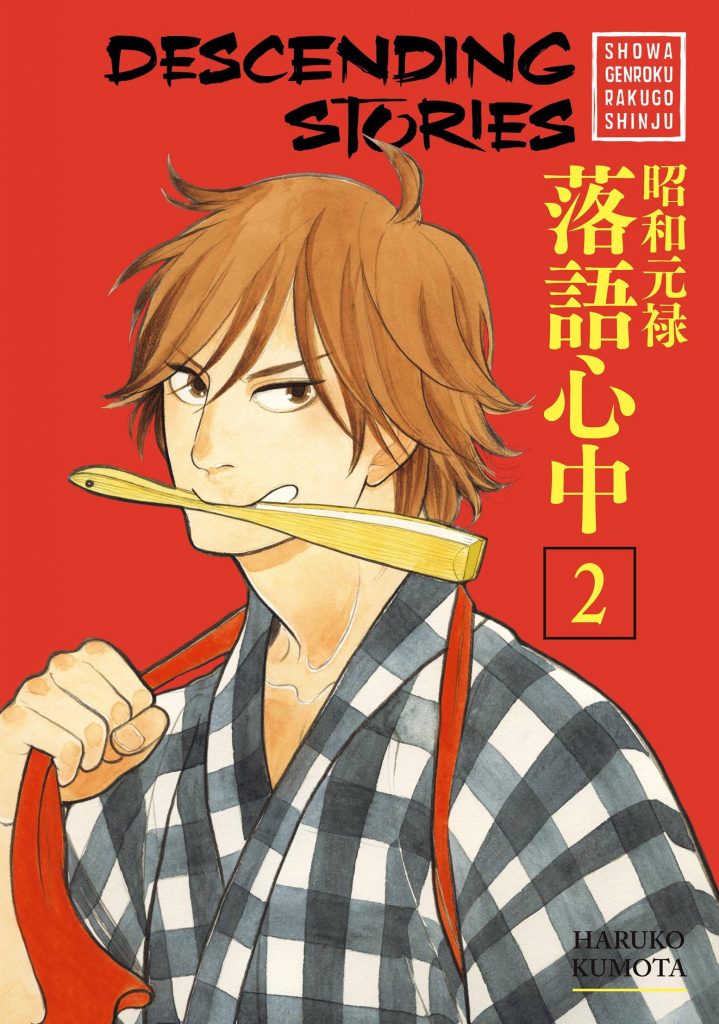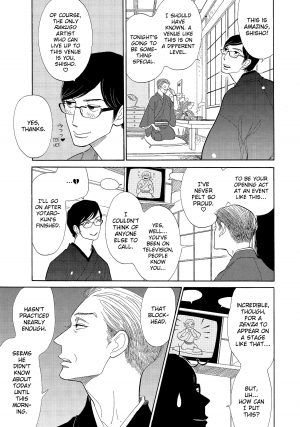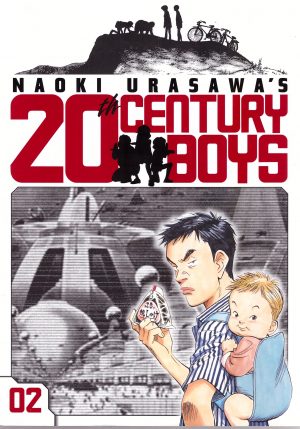Review by Ian Keogh
Descending Stories focuses on the Japanese performance art of Rakugo, a very precise form of acted storytelling with one hell of a lot of regulations applied to apprentices. Yakumo is the form’s acknowledged master, and seemingly on a whim decides to accept enthusiastic amateur Yotaro as an apprentice, which has annoyed his adopted daughter, unable to become a Rakugo performer as she’s a woman.
Haruko Kumota constructed her story in chapters, spread evenly among the ten volumes of Kodansha’s translation, but split those chapters into sections, so Descending Stories 2 opens by concluding the story of Yotaro’s acceptance and his first full performance begun in Descending Stories 1. It’s a strange chapter, one that doesn’t run the way anyone would predict, and includes Kumota’s memorable portrayal of Yakumo at work. The heart of the book, though, is the relationship in younger days of Yakumo and the now dead Sukeraku, both friend and rival to him.
That’s in the two chapters of ‘Yakumo and Sukeroku’, beginning with their first meeting as children. Kumota enlightens as to why Yakumo would take on someone as rough as Yotaro, as his circumstances are very similar to those of the young and enthusiastic Sukeroku, whereas the younger Yakumo’s appreciation of Rakugo occurred by chance and via opportunity. They’re also very contrasting characters, Yakumo withdrawn and cautious, Sukeroku impetuous and unrestrained. Presuming what Kumota reveals about the times is historically accurate (and there’s no reason to believe otherwise), these chapters form an interesting insight into both the dedication required to master a Rakugo performance and broader Japanese society before World War II.
The long look back to the past is a touching tale, and although centred on a specific art the interactions are general enough to be relevant to any number of specialities where a younger generation learn from revered elders. Any lengthy interview with a footballer, comedian or comic artist will feature similar types of influence. As before, Kumota’s performance sequences bring out Rakugo’s qualities, changing the expressions and postures of the performer and in this case having Yukomo comment on and anticipate what Sukeroku will do. It’s nuanced and memorable.
Yukomo’s younger days continue in Descending Stories 3, but Kumota ends with a complete Rakugo performance of ‘The God of Poverty’. It’s drawn in a totally different style, almost as cartoon farce, and is a delight over eight pages.
Reviews of Descending Stories are polarised. For many people the pace is too slow, and the deliberately pernickety detail respectful. However, buy into the entire concept of highlighting an ancient art still performed today, and what it can say about life and every volume of Descending Stories is a treat.





